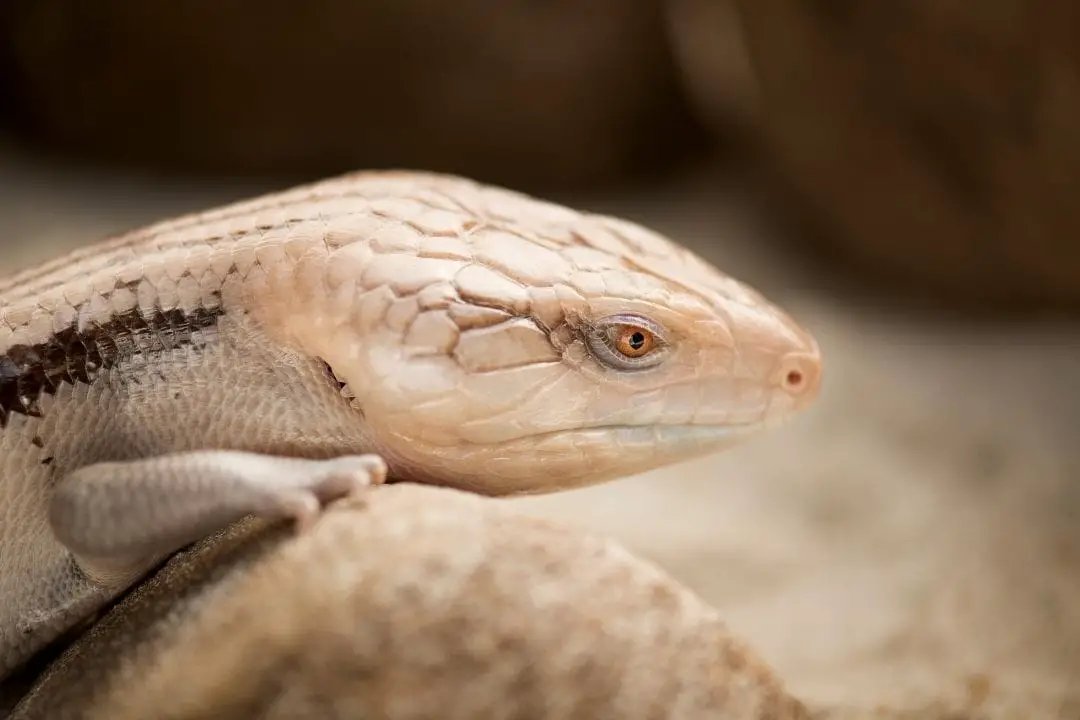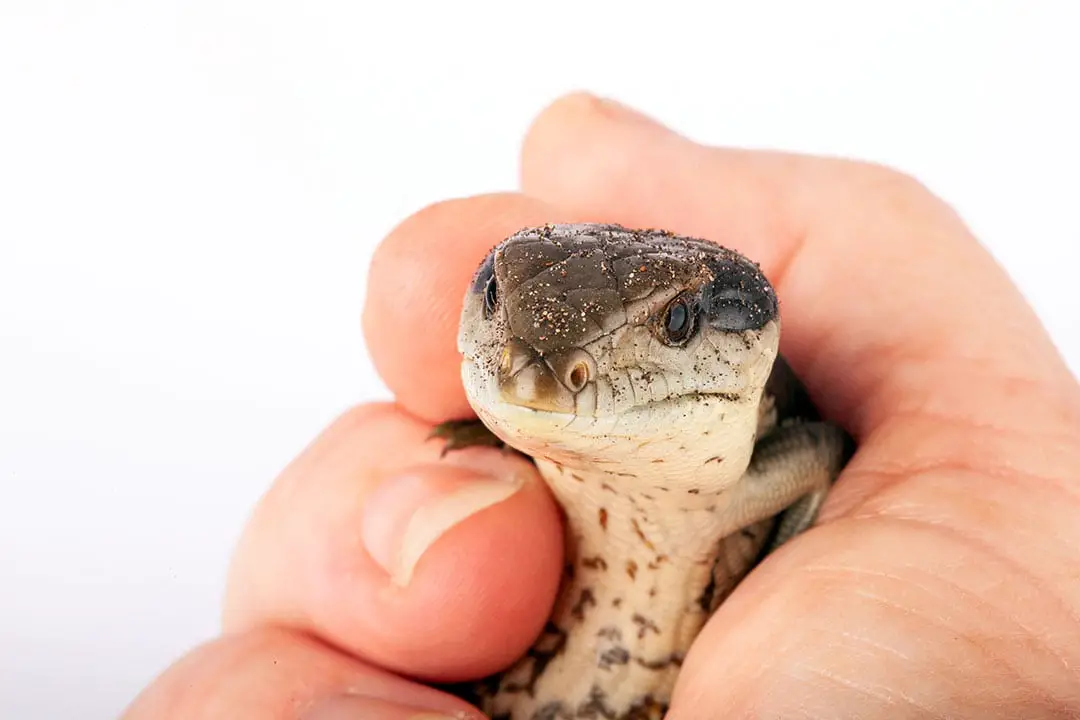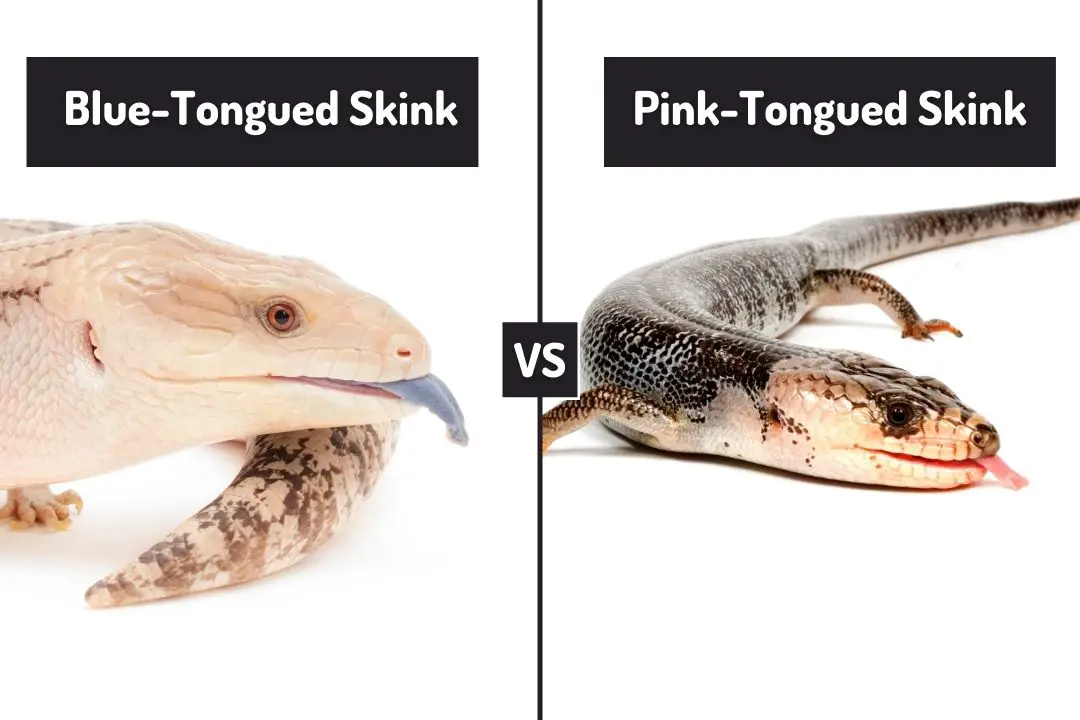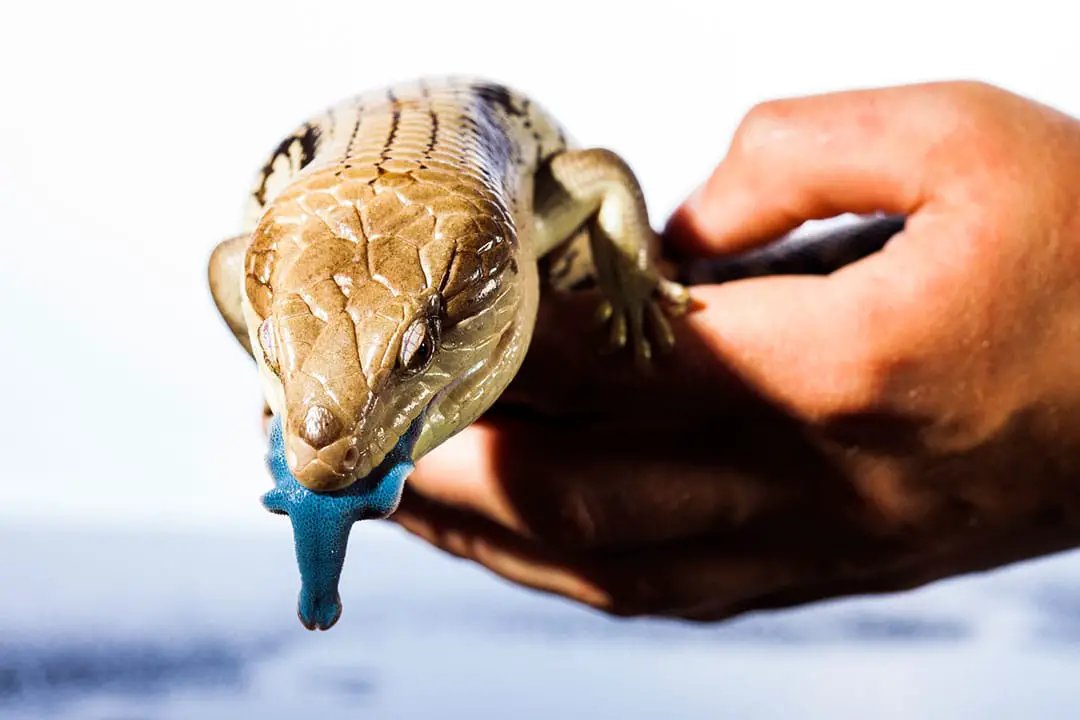Blue-tongued skinks are medium-large lizards in the Tiliqua genus.
There are several species that are common in captivity. One thing they all share is that they are all omnivores.
While they have wide diets, they can still stop eating for a variety of reasons. If your blue-tongued skink isn’t eating, here are a few reasons why.
Remember, if your skink starts losing weight, you need to see your reptile vet.
For a complete guide to enclosure setup, feeding, daily care and breeding,
check out my Blue Tongue Skink Care Sheet.
The possible reasons why a blue tongued skink may refuse to eat are:
1. Too Low Temperatures
Blue-tongued skinks are ectotherms.
This means they do not generate their own body heat. They rely on basking in warm areas to raise their temperature enough for their immune system and digestion to work properly.
Blue-tongued skinks need the right temperature range to stay healthy. This depends on the species. The classic Indonesian blue-tongued skink tends to need lower temperatures than the Northern blue-tongued skink.
If you are not providing a warm enough basking spot, your skink may be too cold. If your skink is cold, it will refuse to eat. This is because it will not be able to digest its meal before it rots.
Be sure to check the surface and air temperature of your basking spot with a temperature gun and a reliable digital thermometer.
2. Improper Lighting
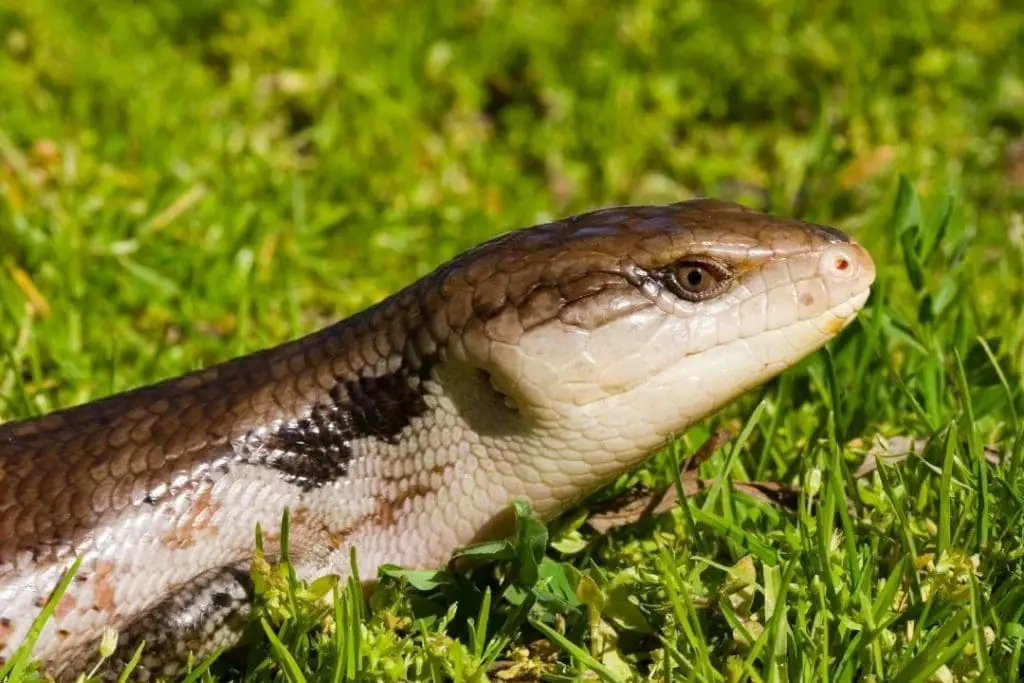
Blue-tongued skinks are diurnal.
They need good lighting including UVB to make sure they have a proper circadian rhythm.
Zoo Med ReptiSun 5.0 UVB Mini (13W)
- Can be placed either vertically or horizontally and doesn’t emit heat.
- 5% UVB wavelengths helps prevent metabolic bone disease.
- Eliminates the need for a separate ballast.
- 30% UVA wavelengths help to increase activity levels, appetite, and reproductive behavior.
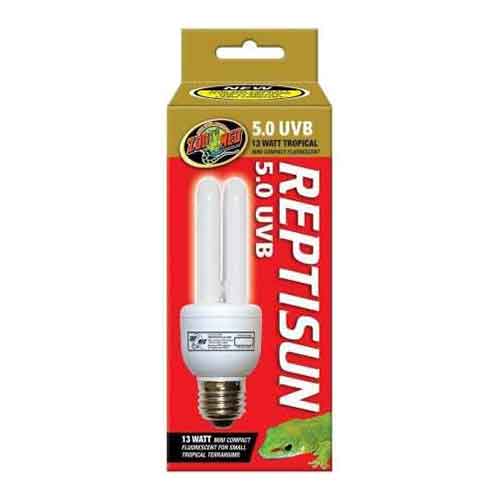
A halogen basking bulb will produce some light, but you should also have some form of another lighting in the enclosure that is on a timer.
This will help signal to your skink when its active time should begin. Skinks kept in the dark will be less active and have a worse appetite. Make sure you set up a good system for your skink.
3. Dehydration
Skinks need hydration to stay healthy. Low humidity and a lack of fresh drinking water can cause serious dehydration in your skink.
This will cause shedding problems and may kill your pet’s appetite. Make sure the humidity level is appropriate for your skink and always offer drinking water to your skink.
4. Breeding Season
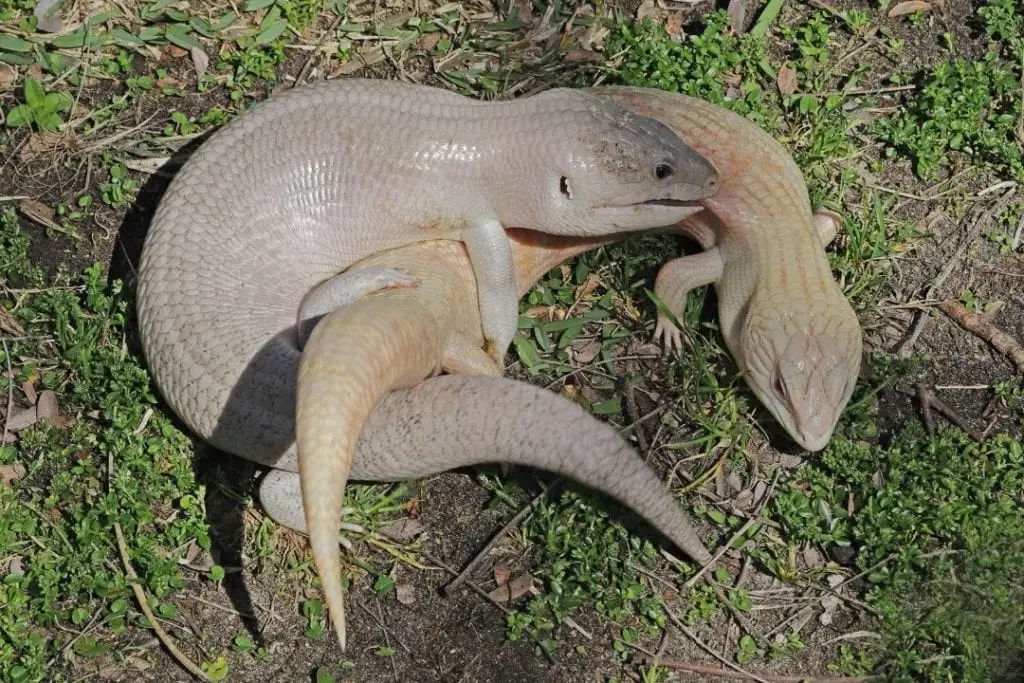
Even if you only own a single skink, its natural cycles still influence it.
This includes the breeding season. Since skinks are solitary, being kept alone will not stop them from wanting to breed.
Breeding season typically lasts from April to September, but this can vary depending on the local climate. Adults may refuse food more often during this time. It will pass and your skink should go back to normal.
5. Illness
Lack of appetite is a big indicator of disease in reptiles. This is particularly true for issues like respiratory infections and mouth rot.
Mouth rot can make eating painful. If your skink refuses to eat and shows signs like discoloration near the mouth or labored breathing, it is time to take your skink to the vet.
These issues can be fixed if they are caught early enough. Impaction can also cause a loss of appetite. this is caused by something not passing through your skink’s digestive system.
If your skink hasn’t pooped for a while, this can be caused by an impaction. Be sure to visit your vet.
6. Stress
Stress can make any animal refuse its food. Cage mates, recent moves, and poor husbandry can stress your pet out. Remember, skinks are solitary and should be housed alone.
If you have kids or other animals, make sure they don’t bother the skink. Too much handling can cause stress, so be sure to step back if your skink stops eating.
Your skink should also have a minimum of two identical hides on each side of the enclosure. If the enclosure is too small, that will also stress out your skink.
Remember, skinks need a big enclosure to stay healthy. If your skink is approaching adulthood and it still lives in a juvenile enclosure, it may be time for an upgrade.
If you fix what is causing the stress, your skink should start eating again.
7 New Skink
If you have recently adopted your skink, it may still be settling in.
Give your skink at least a week to settle in before you start handling it or offering food.
Your pet will need time to feel comfortable and safe in its new home. Be patient and your skink should eat eventually.
8. Boredom
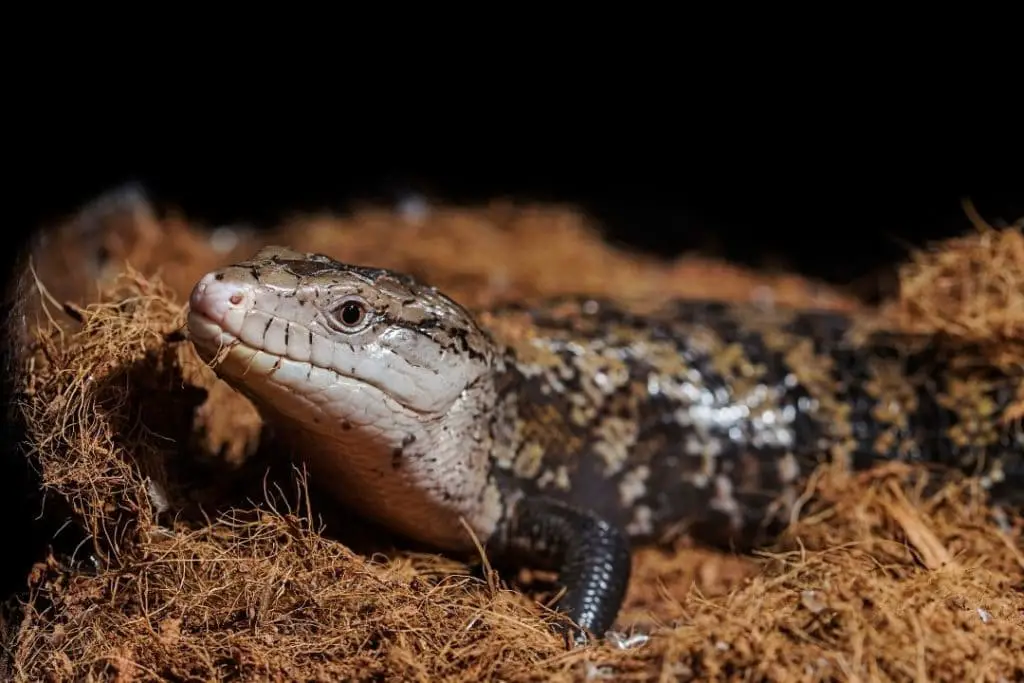
Skinks are omnivores, this means they need a varied diet. Even if you meet all the nutritional needs of your pet, if you feed the same meal every day the skink may refuse it.
Offering some variety such as different vegetables or changing up the protein source may help.
If you feed wet dog food, try making up a healthy meal from skink-safe ingredients to help switch things up.
You can also add different vegetables and fruit to help entice your skink to eat. Pay attention to your skink’s favorite foods and you can figure out what it will be happy to eat.
9. Brumation
Blue-tongued skinks can go into brumation. In the wild, they will become less active when the weather is colder and when food is scarce. They can still exhibit this behavior in captivity.
You may notice your skink becoming lethargic, sleeping more often, and spending more time in its hide during the day. If this is happening during winter, this is perfectly normal.
You should not try to feed your skink during brumation. It will need access to water during the brumation period.
10. Age
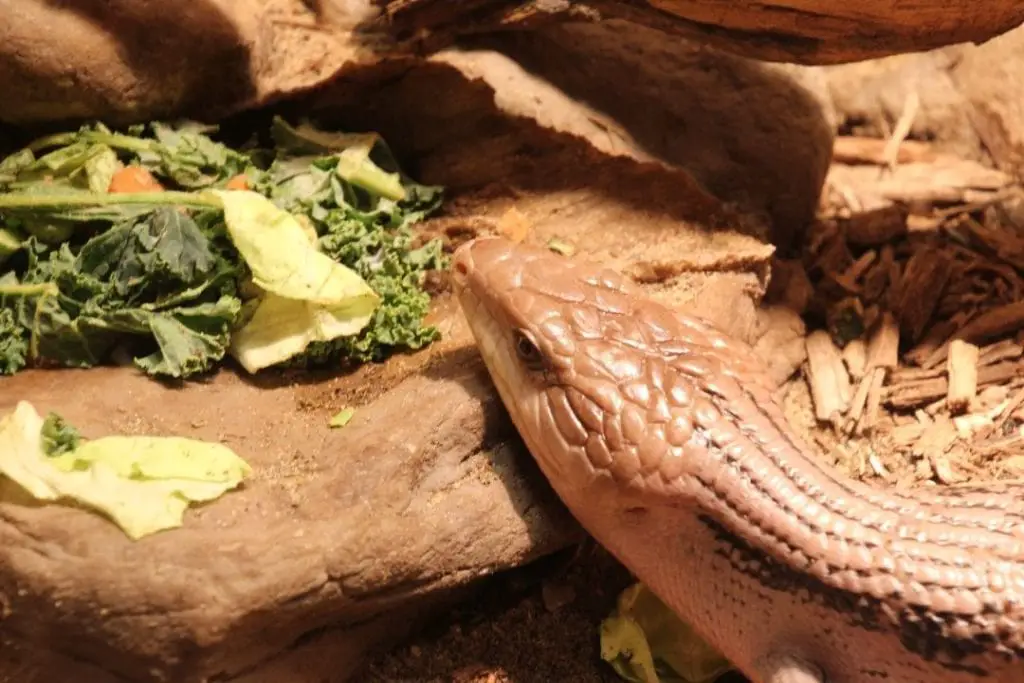
As skinks age, they will eat less often.
If you are feeding an adult like you would a neonate, it may refuse to eat. This is simply because it is still digesting its last meal.
You may also be offering too much food at once. A skink only needs to eat about one or two tablespoons of food for a serving. This is about the size of the animal’s head.
Try offering food less often and be careful with the amount you feed at once. Remember, captive lizards are very prone to obesity and it can seriously harm your pet.
11. Shedding
All reptiles need to shed their skin.
A skink in shed will typically move around less and many refuse to eat during this time. Be sure to offer a humid hide, increase the humidity, and watch to make sure your pet has a healthy shed. Your skink should eat within a week of a successful shed.
Conclusion
Blue-tongued skinks may refuse to eat for a number of reasons. So long as you fix the underlying cause, your pet should perk up before too long.
If you ever notice your pet suddenly losing weight or it has other symptoms, take it to your reptile vet. They can help you get your skink back to health and eating well. If you have any questions or comments, please leave them below.
